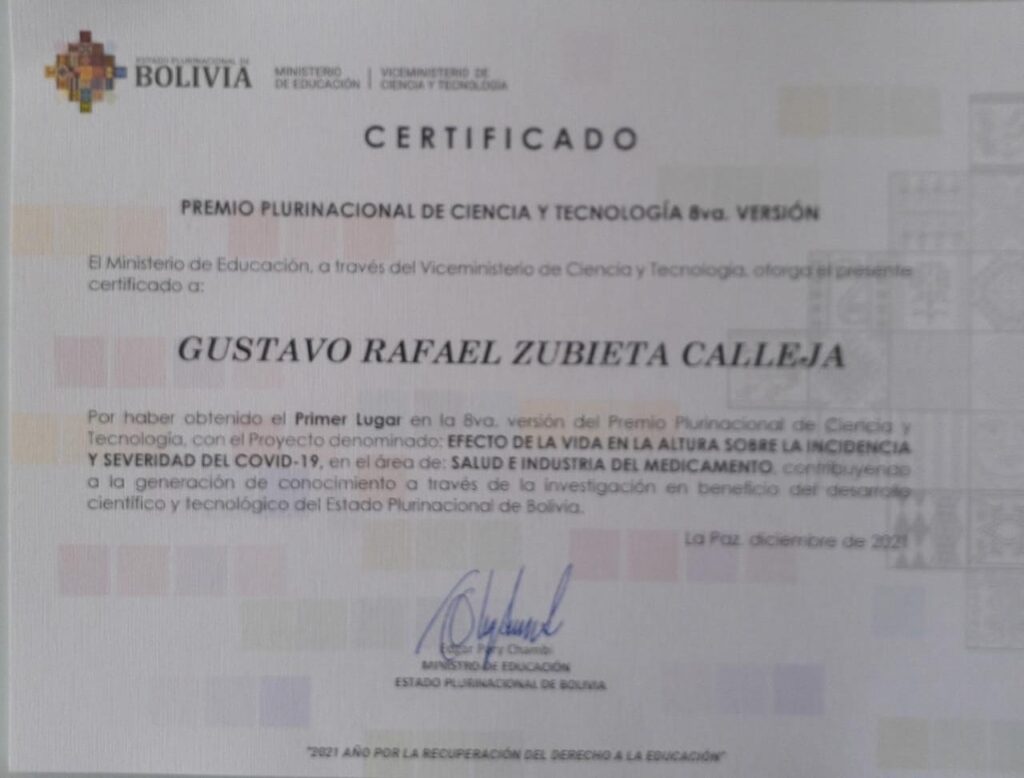
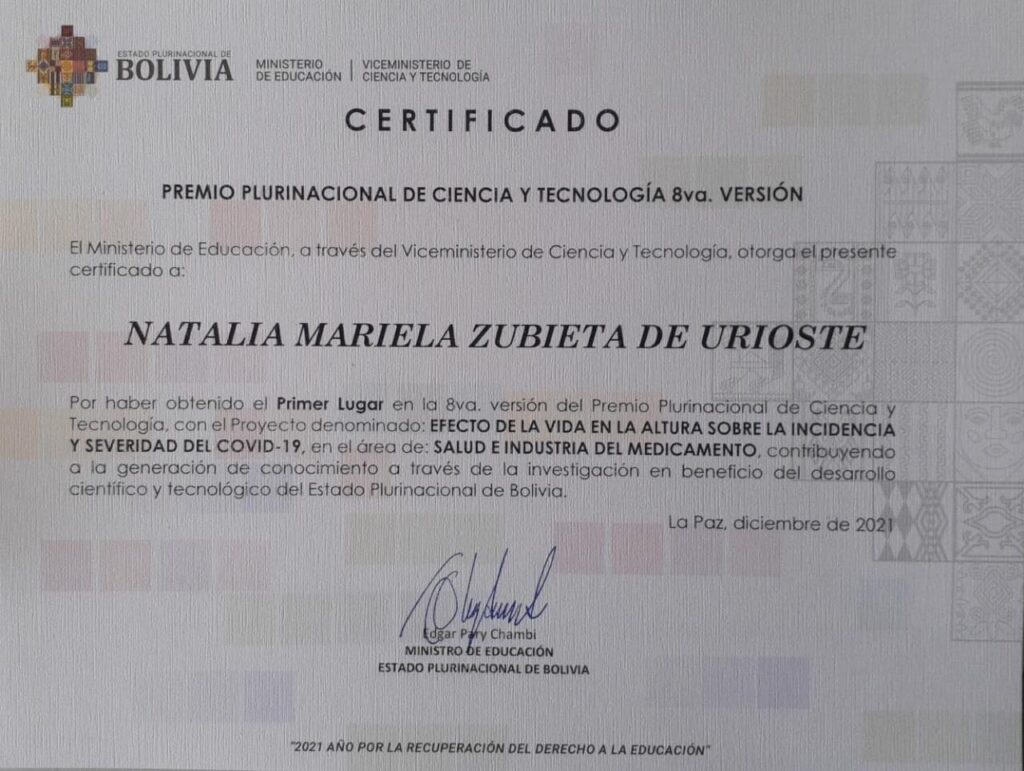

His fully detailed Curriculum Vitae can be found here
PROF. DR. GUSTAVO ZUBIETA-CALLEJA, M.D., FPVRI
The HYPOXIA MAN (India 2017)
Head
High Altitude Pulmonary and Pathology Institute (HAPPI-IPPA) located in La Paz, Bolivia (3,100-4,100m)
in the heart of South America.
Cel (591-73258026)
gzubietajr@altitudeclinic.com
Av. Copacabana – Prolongación # 55
Teleféricos Celeste y Blanco Av. Del Poeta, La Paz, Bolivia
find the Institute map:https://goo.gl/maps/nL2Y2TJjd4t
Ex-Visiting Professor Univ. of Copenhagen
Visiting Professor BLDE University, India
Visiting Professor at Era University, India
Co-Organizer of the 1st WORLD CONGRESS ON HIGH ALTITUDE MEDICINE AND PHYSIOLOGY
Co-Organizer 7 Chronic Hypoxia Symposiums
Carries out joint research with his daughter Dr. Natalia Zubieta-DeUrioste, MD. They collaborate with BLDE University India, Laval University, Canada.
BUT, WHO IS HE REALLY?
…….
Well… kind of difficult to say. He has been described as a “Renaissance Man” along with his father Prof. Dr. Gustavo Zubieta-Castillo, because of his extensive know-how.
Has proposed that space travel should be in a chronic hypoxia environment and created the word BIOSPACEFORMING to denote adaptation to life in space.
He constructed with his father Prof. Dr. Gustavo Zubieta-Calleja the Chacaltaya Glass Pyramid Laboratory at 5,260masl, the highest laboratory in the world.
He helped carry out the Futbol (Soccer) game at the Summit of Mt. Sajama at 6,542 masl, a world record.
He constructed the Hyperoxic/Hypoxic Adaptation Chambers 1 and 2.
He has been invited to give talks in many parts of the world, including:
India (5 times)
USA
Italy
Ukraine
Russia
Spain
Germany
Poland
Denmark
Czech Republic
Ecuador
Colombia
Brazil
Chile
Japan
Tibet
China
And many more…
Interested in learning more about him? Go to his blog.
Make sure you navigate all around.
He has worked on COVID describing the disease from very early on, creating the term Pneumolysis (Lung destruction) in COVID, was the first to affirm, in the world, that COVID would have a lower incidence at high altitude and the favorable effect of U-V radiation at high altitude.
He is also a bioengineer.
He constructed pulmonary function equipment, protein electrophoresis equipment, and even an elevator.
He is a top self-taught mechanical electronics engineer.
He developed hardware, software for medical records and on-line data loggers since 1981, being the first to have databases in the medical field.
Distinctions and Awards:
Several, but he is not interested.
Rather, he created the “Science, Honor and Truth” Award
His publications are extensively read:
Publications by Prof. Dr. Gustavo Zubieta-Calleja ordered by date.
[1] Zubieta-Castillo G, Zubieta-Calleja R, Zubieta-Calleja G. Estudios sobre la circulacion coronaria en la altura. Acta de las Primeras Jornandas de Medicina y Cirugia de la Altura; 1978 4 – 7 de Octubre La Oroya, Peru; 1978.
[2] Zubieta-Castillo G, Zubieta-Calleja, G. & Zubieta-Calleja, R. El consumo de oxigeno en miocardio de perros a 3600 mt y a differentes tensiones de oxigeno. Acta de las primeras Jornadas de Medicina y Cirugia de la altura. La Oroya, Peru 1978.
[3] Zubieta-Calleja G, Zubieta-Castillo, G., Zubieta-Calleja, R. La Produccion de anhidrido carbonico durante el consumo de oxigeno en miocardio de perros a 3600 m. (Abstracto).
Primer Congreso Boliviano de Biología; 1979 1979; UMSS Cochabamba; 1979.
[4] Zubieta-Castillo G, Zubieta-Calleja, R., Zubieta-Calleja, G. Clasificacion de la eritrocitosis en la altura de acuerdo al numero de eritrocitos (Abstracto). Primer Congreso Boliviano de Biología; 1979; UMSS Cochabamba; 1979.
[5] Zubieta-Castillo G, Zubieta-Calleja GR. Chronic mountain sickness and miners (Spanish). Revista de la Academia Nacional de Ciencias de Bolivia. 1985;4:109-16.
[6] Zubieta-Castillo G, Zubieta-Calleja GR. El mal de Montaña Cronico y los mineros. (Chronic mountain sickness and miners). Cuadernos Academia Nacional de Ciencias de Bolivia. 1985;62:109-16.
[7] Zubieta-Castillo G, Zubieta-Calleja GR. Pulmonary diseases and chronic mountain sickness (Spanish). Revista de la Academia Nacional de Ciencias de Bolivia. 1986;5:47-54.
[8] Zubieta-Castillo G, Zubieta-Calleja GR. Las Enfermedades pulmonares y el Mal de Montaña Cronico. (Pulmonary diseases and chronic mountain sickness). Cuadernos de la Academia Nacional de Ciencias de Bolivia. 1986;68:3-12.
[9] Zubieta-Castillo G, Zubieta-Calleja GR. The triple hypoxia syndrome at altitude (Abstract). Amer Rev of Respir Dis. 1988;137(4):509.
[10] Zubieta-Castillo G, Zubieta-Calleja GR. Iatrogenic Disease in a polycythemic patient at altitude. Amer Rev of Respir Dis. 1988;137(4):509.
[11] Zubieta-Calleja GR, Zubieta-Castillo G. High Altitude Pathology at 12000 ft. La Paz: Publisher: Papiro, 1989. La Paz, Bolivia
[12] Zubieta-Castillo G, Zubieta-Calleja GR. Progressive high altitude hypoventilation reversed by hyperoxia. Amer Rev of Respir Dis. 1990;141(4):a924.
[13] Zubieta-Castillo. G & Zubieta-Calleja G. Hematocrit, PaO2 and PaCO2 changes in a High altitude increased Polycythemic during a 12 year follow up. Amer Rev of Respir Dis. 1990;141(4):a921.
[14] Zubieta-Castillo G, Zubieta-Calleja, G & Zubieta-Calleja, L. Cambios en la PaO2, PaCO2 y el hematocrito en un paciente con mal de montaña cronico durante 12 años. Acta del Quinto Congreso Nacional de Medicina de la Altura; 1992; La Oroya, Peru; 1992. p. 136.
[15] Zubieta-Castillo G, Zubieta-Calleja G. Acute Hypoventilation on ascent to high altitude. European Respiratory Society Congress; 1992; Vienna, Austria; 1992.
[16] Zubieta-Castillo G, Zubieta-Calleja GR. El Sindrome de Triple Hipoxia en la Altura. Acta del Quinto Congreso Nacional de Medicina de la Altura; 1992; La Oroya, Peru; 1992. p.
136.
[17] Zubieta-Castillo G, Zubieta-Calleja G. Eritrocitosis agudas, EPOC y sindrome de triple hipoxia. Acta del Quinto Congreso Nacional de Medicina de la Altura; 1992; La Oroya,
Peru; 1992. p. 135.
[18] Zubieta-Calleja G, Zubieta-Castillo G. High altitude illness in Bolivia (Abstract). First World Congress of High Altitude Medicine and Physiology;
1994; La Paz, Bolivia: Edvil;p. 58.
But overall, he is a nice guy!!
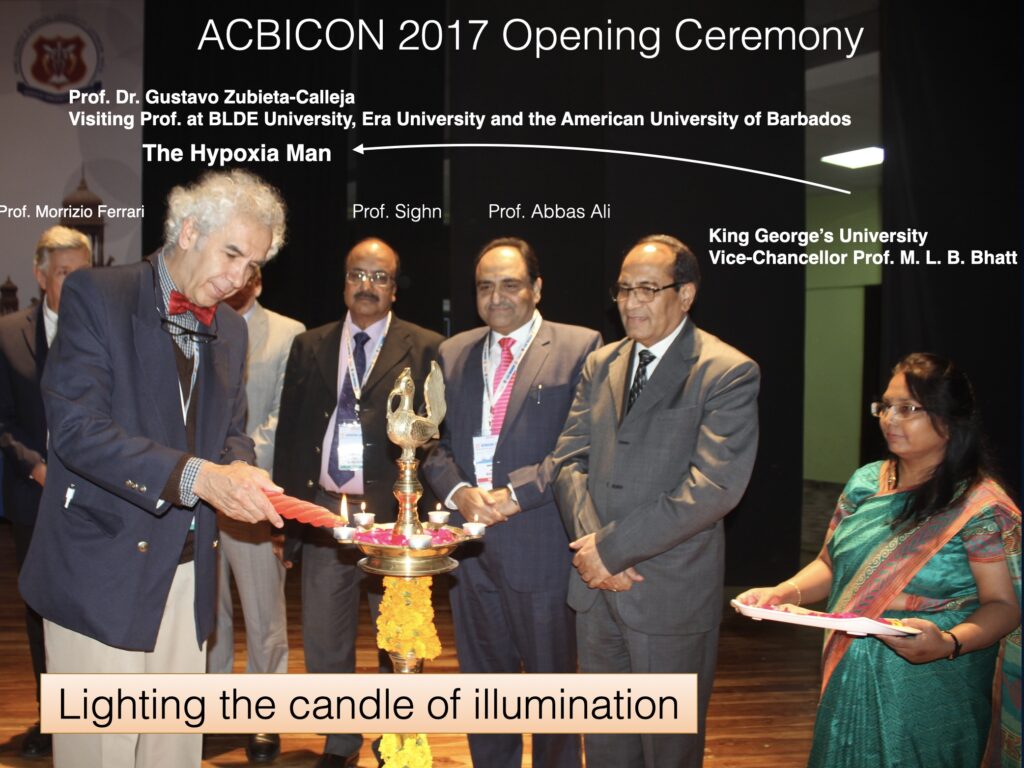
Prof. Dr. Gustavo Zubieta-Calleja was addressed for the first time in 2017 as THE HYPOXIA MAN by Prof. M.L.B. Bhatt the Vice-Chancellor of King George’s Medical University in Lucknow India shown above during the Inauguration of the Asociation of Clinical Biochemists International Conference (ACBICON).
India is one of the most beautiful countries in the world. Its biodiversity, love, and respect of all living beings and its kindness and hospitality, never stop surprising me. Five times have I visited India, thus far. Three with my late father Prof. Dr. Gustavo Zubieta-Castillo, the Mountain Guru!
Prof. Thuppil Venkatesh, The Lead Man of India has been instrumental. We met at the 4th World Conference on High Altitude Medicine and Physiology in Arica, Chile in 2000. The President of that meeting was Klaus Behn, a fine man, that we have never seen again, although we would love to do it. He had invited my father to be one of the 3 Keynote Speakers. His theme was Chronic Mountain Sickness. Unfortunately, a Peruvian lady imposed her presence and my father was obliged to share his presentation.
Prof. Venkatesh is the current President of the International Society of Chronic Hypoxia. Prof. Dr. Gustavo Zubieta-Calleja (Jr) is the Vice-President.
It is interesting to point out, that during the ACBICON 2017 conference, Gustavo Jr had not taken a suit to his 4th visit to India. Prof. Venkatesh kindly lent him a blue coat, which is shown in the picture above.
Outside King George’s beautiful Vice-Chancellor’s office we share some wonderful moments with Prof. (Dr.) Farzana Mahdi , Vice-Chancellor of Era University, and our dear friend Dr. Hari Sharma Professor at Erasmus MC in Belgium.
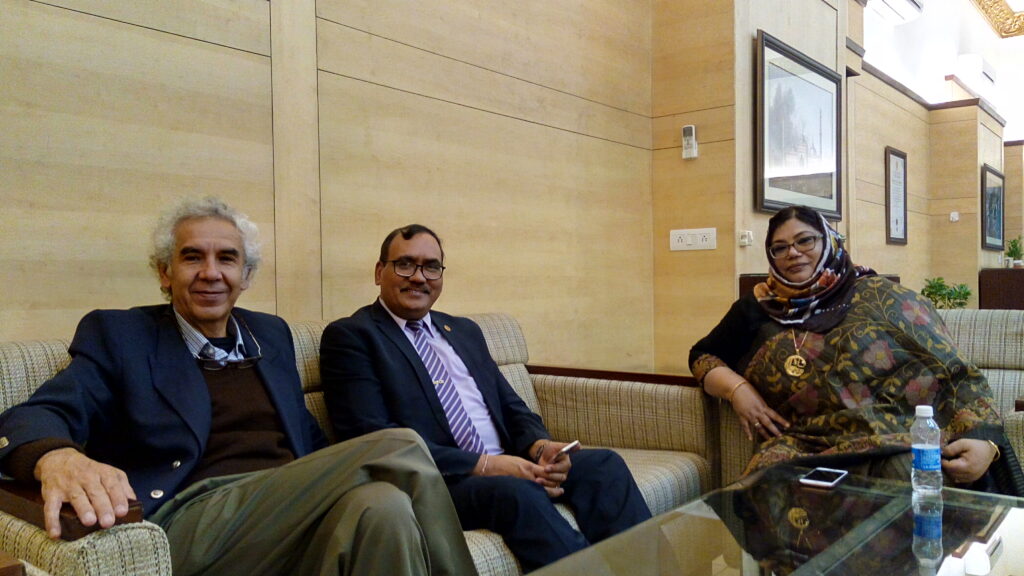
During a wonderful visit to Prof. M.L. Bhatt, Vice-Chancellor’s at the King Georges’s University in Lucknow, India, we discussed many interesting aspects.
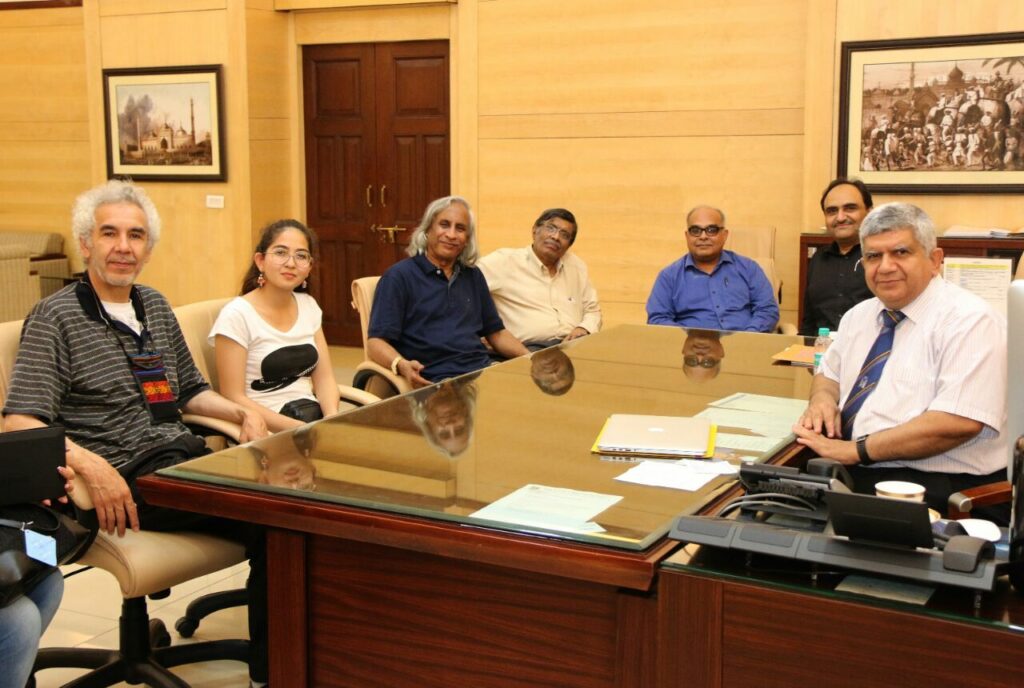
CONSENSUS STATEMENT by and Ad Hoc Committee of the International Society for Mountain Medicine on CHRONIC HIGH ALTITUDE DISEASES
These guidelines are established to inform the medical services onsite, who are directed to solve high altitude health problems, about the definition, diagnosis, treatment and prevention of the most common high altitude diseases. The health problems associated with life at high altitude are well documented, but health policies and procedures often do not reflect current state-of-art knowledge. Most of the cases of high altitude diseases are preventable if onsite personnel identify the condition and implement appropriate care.
This consensus statement has been developed by medical/scientific experts from the Committee experienced in the recognition and prevention of high altitude diseases.
Affiliations of the Ad Hoc Committee on Chronic High Altitude Diseases
Co-Chairs : Fabiola León-Velarde (UPCH, ISMM and ARPE, Perú) and
John T. Reeves (……., USA).
Committee : Almaz Aldashev (…….,, Kyrgyz Republic) ; Ingrid Asmus (……. ; USA) ; Luciano Bernardi (…….., Italy) ; Ri-Li Ge (……, China); Peter Hackett (ISMM and WMS, USA); Toshio Kobayashi (…….., Japan) ; Marco Maggiorini (…….., Switzerland); Lorna G. Moore (ISMM, USA) ; Dante Peñaloza (UPCH, Perú) ; Jean Paul Richalet (ISMM and ARPE, France); Robert Roach (ISMM, USA); Tianyi Wu (…….., China) ; Enrique Vargas (ISMM and IBBA, Bolivia) ; Gustavo Zubieta-Castillo, Sr., ; Gustavo Zubieta-Calleja, Jr. (ISMM, IPPA, Bolivia)
At this point, the Zubieta draft (click here) for the final version to be defined in Xining, China, was sent by us.
At Xining we were mostly ignored with our concepts, where we were the ones actually diagnosing and treating these patients in the cities of La Paz, and El Alto, Bolivia between 3,100 to 4,100m of altitude.
The final version of the Consensus Statement on Chronic and Subacute High Altitude Diseases can be found here.
It becomes clearly evident that of all the references we provided, only one was included. The rest were totally droped out.
This meant a great loss for the high altitude health systems around the world, since 2005 (16 years as of 2021 when this article was writen).
We did achieve that the term “Loss of Adaptation” be dropped but it continues to be used regularly as of 2021.
Nevertheless, it was during this time that we received an email that Prof. Dr. Gustavo Zubieta-Castillo responded after some time as a public letter entitle “FOREVER, LOSS OF ADAPTATION DOES NOT EXIST“
Dear Jack:
FIRST:
This is how we are seeing some general medical aspects at our institution:
a) When normal animals or human beings ascend to altitude the two pumps, hemo-dynamic and neumo-dynamic play a fundamental role in acute adaptation to hypoxia as has been nicely described by many authors.
b) In normal and subjects with disease of diverse etiology, the increase of hemoglobin is the most effective mechanism of adaptation.
c) When there is tissue hypoxia, independent of its cause the increase of hemoglobin is closely related with the degree of hypoxia, resembling the altitude effect.
d) This increase in hemoglobin is due, for example, to the presence of pulmonary shunt of varied etiology, from which the principal is anatomo-pathologic lesions as: the destruction, obstruction, or impermeability of the pulmonary alveoli with preservation of the alveoli capillary net. The lesions that more often produce shunt are: the macro and micro thromboembolism due to endothelial damage in the venous system as in phlebitis, certain forms of skin cancer, parasites, smoking, etc.
e) In the lungs the arterialized pulmonary veins blood (already hypoxic due to altitude) mixes with non-arterialized blood of the alveolar shunt, then goes to all organs with low oxygen tension, unsaturated. The kidney responds with the erythropoyetin and the bone marrow with the erythrocyte production.
f) Adaptation mechanisms to acute and chronic hypoxia are the same, the only difference is their time of action.
g) The benefit of low ascent is based on the necessary time for hemoglobin to be produced, in order to reach the normal value for a certain altitude.
h) Hemoglobin during hypoxia increases oxygen content (CaO2) and respiration is regulated according to the metabolism at rest and during exercise. The CaO2 is reduced to the minimum during sleep. Hypoventilation due to “ relative hyperoxia “ at the nervous centers level regulates respiratory frequency.
SECOND:
Thank you so much for your comments on the subject of CaO2 and PaO2 in respiratory control. It is a privilege to exchange ideas in this matter with you.
I will freely express the following points, which are based on observations at our laboratory, which up to now are unfortunately unpublished. Of course, this is only some preliminary opinion.
We have been studying oxygen consumption of yeast and the oxyhemoglobin saturation curve in blood from normals and increased polycythemia, under the same experimental conditions. The difference is that yeast cells take longer to consume the oxygen from the polycythemic blood due to a higher oxygen content in hemoglobin, making the desaturation curve bulky and CaO2 can be calculated by integrating it. Yeast does not stop oxygen consumption down to a very low PO2 and CaO2 in the saturation curve: So you can assume that the same happens with all cells in the tissues.
The affinity of the cells for O2 is of such a degree that a small difference in pressure will be sufficient, depending on their metabolic rate and respiratory coefficient.
We were also studying the differences between normal and increased polycythemia during exercise. During all stages, SaO2 of increased polycythemia remained lower than in normals up to the end of the exercise protocol. The lower saturation reflects the low oxygen tension. The non-sedentary patients tolerate very well the protocol with very low O2 tensions due to a sufficient amount of oxygen in the CaO2.
THIRD:
As a consequence, – since nothing is absolute – , the following questions arise:
1) Is the increase of Hb necessary or unnecessary for adaptation to high altitude and particularly in tissue hypoxia due to disease? Can other mechanisms replace the role of Hb?
2) Is there a necessity of a great difference of PaO2 between the red cell and the tissue cell?
3) In polycytemia Vera and anemia are the mechanisms of metabolism different? How are the two pumps regulated?
That is what I can say for the moment, there’s more to come.
Gustavo Sr.
July-15-2004

It is with great sadness that we communicate the loss of a great man, a great leader, a great educator, a great physician, a great Vice-Chancellor, and a great friend: the Distinguished Dr. M.S. Biradar.
He leaves an empty space physically and in all our brains, and with great sorrow because we did not learn, all we could from him. He was profoundly philosophical, kind, sweet, and wise! Few have such distinctions in life!!!
The HIGH ALTITUDE PULMONARY AND PATHOLOGY INSTITUTE (HAPPI-IPPA) from La Paz, Bolivia, honors his memory from here into Eternity!!



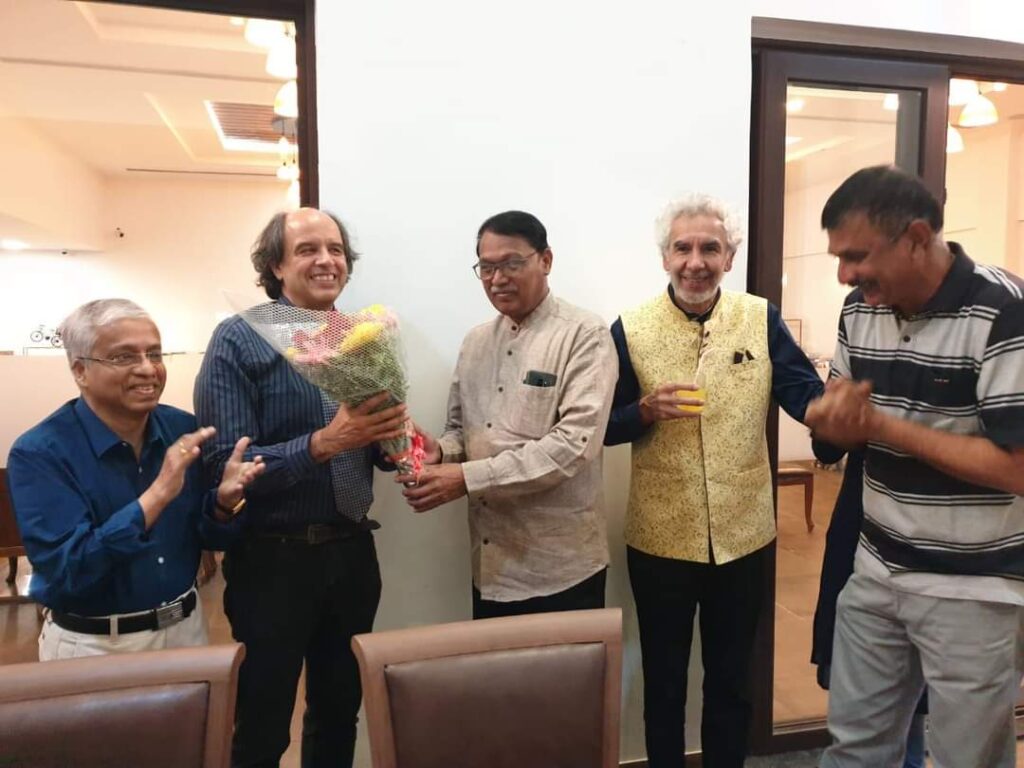

Please see the beautiful Condolence messages from World leaders of Medical Sciences:

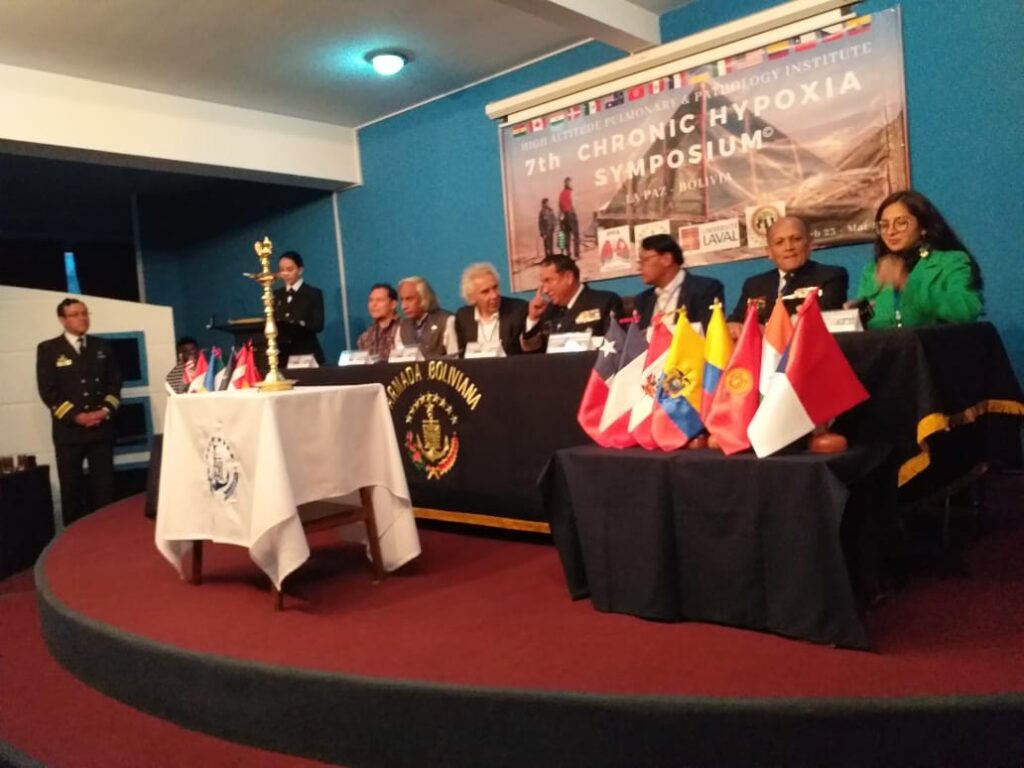
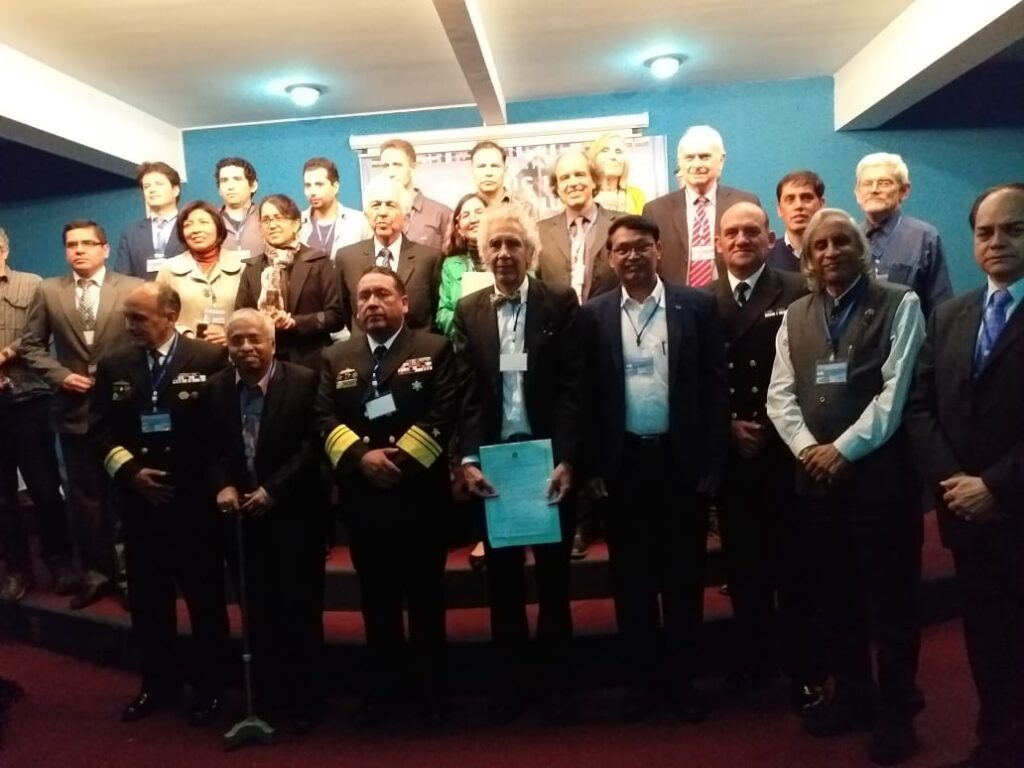

The local Newspaper EL DIARIO publication MARCH 3, 2019 can be found here